By Emily D. Irvine: 12-14-12
In 1960, modern medicine achieved a long awaited breakthrough that would fundamentally alter the course of women’s history. The final FDA approval and subsequent production of the birth control pill was the culmination of nearly fifty years of research and the answer to a need and demand as old as intercourse. The Pill was wrought with controversy long before it became a scientific reality, that controversy coming most strongly from religious organizations and men in political power. Though the Pill’s popularity has far outweighed its controversy in the fifty years that have transpired since its invention, opposition to the Pill remains in the same sectors that fought against it throughout the Twentieth Century. Despite unfounded and misguided opposition, a generation of use and relentless study have proven the benefits of hormonal birth control on women’s health extend far beyond the obvious empowerment and reproductive control afforded by its usage. Even without the truth of medical benefit beyond contraception to add legitimacy to usage the Pill, without it, advancements in women’s rights would be virtually non-existent as a steady increase in contraception use has correlated with a dramatic increase in educated and working women, both married and unmarried. The invention of the birth control pill is arguably the most significant catalyst in forwarding the movement toward women’s equality, a move impossible without first acknowledging and recognizing a woman’s right to be solely in charge of decisions regarding her body.
Though various forms of contraception with varying levels of effectiveness have existed as long as intercourse, it was in the Nineteenth and Twentieth Centuries that methods as safe as they are effective began to emerge. In the United States, the medical and scientific community fought an uphill battle against American politics and the Catholic Church in the quest to give women complete power over their reproductive rights. In 1839, inventor Charles Goodyear discovered the means to vulcanize rubber leading the the mass manufacturing of the first rubber condoms and diaphragms, known then as “womb veils.” Immense popularity and accessibility of these devices over the coming decades was counteracted by Congress in 1873 with the passage of the Comstock Law, which declared contraception obscene and made the United States the only western nation to enact laws criminalizing birth control. Though developments continued in Europe toward improved barrier methods of contraception, such as Wilhelm Mensinga’s larger model cervical cap that would improve the diaphragm, as well as continued improvements to the condom in Great Britain, there existed no hormonal form of contraception (Timeline).
It was in 1912 that Margaret Sanger, a nurse in New York City and sixth child born to a poor Irish-Catholic family, first expressed the need for a “magic pill as easy to take as aspirin” that could be used to prevent pregnancy. Sanger became an avid lecturer and started a periodical entitled The Woman Rebel in which she made the radical statement that women should attempt to avoid pregnancy if they find themselves too ill or too poor to bear and raise children. In June of 1914, Sanger first used the term “birth control” and dared to publish it in The Woman Rebel, a step too far that lead to her being charged of nine violations under the Comstock Law. Sanger left the country to continue her work in England, returning in 1916 when the charges against her were dropped. She brazenly continued to fight for her cause, opening the first birth control clinic in the United States in 1916. Her clinic remained open for a total of ten days before being raided and disbanded and all illegal condoms and diaphragms destroyed. In 1917, Sanger met Katherine McCormick, the wife of the heir to the International Harvester Company. Her husband, Stanley McCormick, suffered from schizophrenia, and Katherine was a strong supporter of birth control due to her refusal to have children should the disease prove hereditary. McCormick and Sanger formed a friendship and partnership with McCormick contributing a total of $2 million over the coming decades to the research that would ultimately lead to the invention of the magic pill Sanger dreamed of (Timeline).
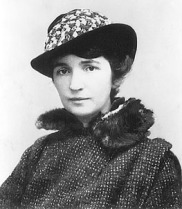
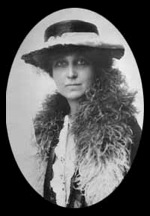
Margarete Sanger and Katherine McCormick
In 1932, Charlotte Perkins Gilman published an article in The Nation in which she asserted her belief that the “unfit” should be sterilized, a common practice in the first half of the century, the “unfit” being the inhabitants of mental institutions (Knowles). Though such a belief is disturbing by Twenty-first Century standards, Gilman’s other beliefs on the benefits of birth control and the compelling social need for it echoed and reinforced the fight of women like Sanger and McCormick. Skewed social perceptions of forced sterilization aside, Gilman also believed in the right of women, who are significantly more effected by pregnancy than men, to decide when to avoid it. In a 1932 article entitled “Birth Control, Religion, and the Unfit,” Gilman, stated:
“Personal is the protest of the woman, who after all is more immediately concerned in the matter of birth than the man. Must she, if worn, exhausted, usually tortured, often killed in the process, bear children regardless of her own wish or ability, to the detriment of the entire family? Or may she choose, saying ” Not this year,” or “Not till we can afford it,” or “Six is enough”? Deepest of all is the interest of the child, who has a right to vigorous parents and a well-cared-for youth” (Gilman).
It was Gilman’s belief that producing children one cannot afford to feed is ultimately unfair to the child, and given the opportunity, most women would willingly and eagerly avoid pregnancy in the interest of providing better care for fewer children, a great benefit to the family as well as to society, limiting the number of families in poverty and the number of children ultimately made the responsibility of government funding. In 1932, Gilman composed a poem entitled “For Birth Control,” penning a work that would add artistic relevance to the cultural debate on contraception:
For Birth Control; for mothers free
To bear strong children willingly
And rear them well; not as before
Theirs and their children’s lives to pour
In needless death and misery.
Who stands against us? Those who see
Gain in unchecked fecundity —
Not better children — only more
No Birth Control
For mothers in whose power shall be
The lifting of humanity —
A world of improving more and more —
A world at peace from shore to shore —
This is the reason and the plea
For Birth Control.
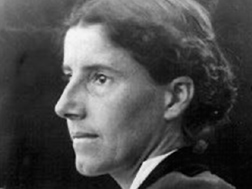
Charlotte Perkins Gilman
Gilman believed that those who saw “gain in unchecked fecundity” were of a religious persuasion, stating, “every religion believes itself to be the Truth, and warmly desires to increase its membership, not intelligence and ability being requisite, but numbers” (Gilman). Though Gilman’s extreme generalization unfairly assumes that all believers are extremists, patriarchal religious organizations, particularity the Catholic Church provided the strongest and most long-standing opposition to birth control, an opposition that continues to the present. In 1930, the Vatican made its first official statement on the use of contraception with Pope Pius XI stating in Casti Connubii that “any use whatsoever of matrimony exercised in such a way that the act is deliberately frustrated in its natural power to generate life is an offense against the law of God and of nature, and those who indulge in such are branded with the guilt of a grave sin.” With this statement, the Vatican solidified its position as being in opposition to the cause of contraception, justified by their position that the prime purpose of marriage is procreation. Pius XI also likely inspired Gilman’s position on the detrimental role of church sanctioned “unchecked fecundity” with his statement that Christian parents are called to not just produce children, but specifically, “children who are to become members of the Church of Christ, to raise up fellow-citizens of the Saints, and members of God’s household, that the worshippers of God and Our Savior may daily increase.” Though it is no great crime for any religion to desire its own increase, to do so at the expense of health and financial security leads to great social detriment. The Catholic Church’s insistence that reproduction go unchecked regardless of the economic or medical burdens of the woman and family led countless families, such as Margaret Sanger’s, to be reduced to a life of poverty. Pius XI had an answer to this too, stating “we are deeply touched by the sufferings of those parents who, in extreme want, experience great difficulty in rearing their children. However…there is no possible circumstance in which husband and wife cannot, strengthened by the grace of God, fulfill faithfully their duties…” Faith is powerful, but it is no basis for social policy, nor is it grounds for the hinderance of medical advancement. Pius XI words did nothing to stop the inevitable.
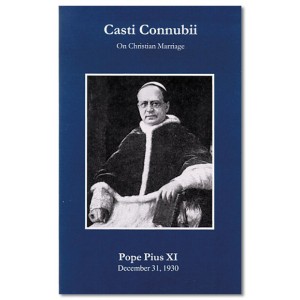
Ultimately, it was a Catholic who was one half of the team that made oral contraception a reality. In 1931, Physician John Rock became the only Catholic to sign a petition aimed at ending Massachusetts’s overly strict anti-birth control law. The petition was denied, but Rock spent the next thirty years pursing medical developments aimed at treating infertility in women, but ultimately discovered the groundwork for the wonder drug that would temporarily produce the opposite effect. In the late 1940s, Rock was experimenting with the oral administration of estrogen and progesterone, reasoning that by using these hormones to artificially create a hormonal pseudo-pregnancy in infertile women, fertility could eventually be restored. What Rock found was that by creating a pseudo-pregnancy with these hormones, ovulation did not occur. During the same period, biologist Gregory Pincus extensively studied the effects of these same hormones on the ovulation of rabbits, coming to the same conclusions. Rock and Pincus compared results and Margaret Sanger, now in her seventies and founder of the Planned Parenthood Foundation of America, provided a grant for continued research. Katharine McCormick, now solely in charge of her late husband’s fortune, asked Sanger where funding for their decades long cause would be best spent, leading to a massive donation to Rock and Pincus. Clinical human trials began utilizing a combination of synthetic progesterone and estrogen. The first oral contraceptive was created in 1957, though only approved in the United States for the treatment of menstrual disorders. In 1961, Envoid® became the first FDA approved oral contraceptive. The “magic pill” Margaret Sanger envisioned in 1912 was invented (Dhont).

The Pill has been continuously improved and studied for fifty years and is the first medication designed to be administered to a healthy person for an extended period of time and remains the most extensively studied drug in medical history with virtually unanimous support by medical professionals giving strong credibility to its safety and effectiveness (Knowles). There are now dozens of brands of oral contraceptive available all administering varying doses of progesterone and estrogen in the case of combination pills, or progesterone only. These hormones are naturally produced by the body during pregnancy and their artificial administration halts ovulation by keeping the hormone levels in the body consistent with that of pregnancy. Progesterone also thickens the mucus of the cervix making the passage of sperm more difficult. Many religious organizations and social conservatives express opposition to the Pill and call its use “morally suspect” due to studies revealing that progesterone causes the uterine wall to thin, making the implantation of a fertilized egg more difficult. However, it needs to be understood that the Pill, by design and when used properly, does not allow ovulation, making the point largely irrelevant. Furthermore, implantation failure is common under normal circumstances as a woman’s uterine wall varies in thickness between natural ovulation and menstruation, and progesterone is produced by the body naturally. There is no evidence to suggest that Pill failure inhibits implantation at a rate any higher than the natural process. In a 2001 article in The New England Journal of Medicine, physician Susan J. Fisher states:
“Human reproduction entails a fundamental paradox: although it is critical to the survival of the species, the process is relatively inefficient. Only 50 to 60% of pregnancies advance beyond 20 weeks of gestation. Of the pregnancies that are lost, 75% represent a failure of implantation and are therefore not clinically recognized as pregnancies” (Fisher).
Fisher touches on a key point that blows a hole in a long standing argument that life begins at the point of conception. Medically speaking, a pregnancy is not officially recognized unless implantation occurs in the uterus, as a fertilized egg can only survive if it implants on the uterine wall. Eggs can implant in inhospitable places such as the fallopian tubes (where they will ultimately kill the mother if the ectopic pregnancy is not terminated) or fail to implant long enough to begin the growth process, or simply fail to implant at all, all by means entirely natural. For the progesterone qualities in oral contraceptives to be considered abortifacient by those who maintain the point of conception is sacred, their rate of causing implantation failure would have to exceed the 50-60% natural failure. There is no evidence to suggest this is true. Statistics aside, The Pill is a virtually flawless form of birth control when used properly, and its failure is generally the fault of the user. The pills are generally administered in twenty-eight day regimens, though extended cycle regimens such as Seasonique® have recently become available. Regardless, pills must be taken every day and at the same time everyday. Missing a day and vast inconsistency in the time of day at which the Pill is taken are virtually the only reasons for its failure, aside from the use of some antibiotics which women are warned of upon prescription. If the Pill fails and ovulation occurs, all statistical information suggests that a woman’s chance of pregnancy remains the same and depends on the same perfect combination of factors as natural process (Fisher).
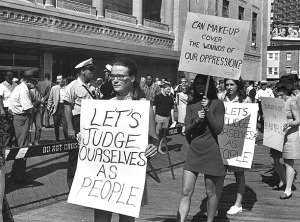
The invention of oral contraception correlated with a rapid change in the social climate of the United States. The 1960s bore the Civil Right’s Movement as well as the Sexual Revolution, making it the decade in which women and minorities began to find their voice in numbers that could truly inspire social change. In the 1940s and 1950s, the “nuclear family” was the foundation of American life. In post-war America, men worked for high end corporations that afforded them disposable income while their wives tended to the home, (which was owned and located in a desirable patch of suburbia), and raised children. Women came to embody the stereotypical 50s housewife, not necessarily by choice but because other options were frowned upon by the pressures and expectations of post-war American society. Historian Susan L. Cohen states that in the year 1957, more than half of American women were married by age twenty and nine out of ten Americans viewed individuals who chose not to marry as “sick,” “neurotic,” or “immoral. By the year Envoid® was finally available, Cohen states:
“Only 8% of women were college graduates. Only 2% of law degrees, 4% of MBAs, and 6% of medical degrees were conferred on women. In the year President John F. Kennedy announced the nation would put a man on the moon, most young American women dreamed of marrying by age twenty-one, quitting work, and having four children” (Cohen).
By the 1960s, more daughters became college graduates who pursued careers before families while their mothers returned to work after their children left home. These freedoms were made largely possible by oral contraceptives, a drug that gave women complete sexual freedom and allowed them to consciously choose to defer motherhood without deferring becoming sexually active. Subsequently, the nuclear family of social construction dissolved in the mid 70s, partly due to a rise in educated and working women and partly out of necessity. The weak economy of the early to mid 70s made households with only one working parent impractical and unfeasible, with use of the Pill providing couples with a vital tool in limiting family size for financial reasons, a luxury Margaret Sanger dreamed of at the beginning of the century. The difference was by the 1970s, working women, be they single, married, or mothers, were socially acceptable and relatively common. The stigma was dissolving.
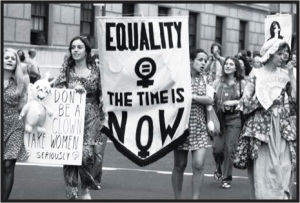
The notion that women actually enjoy sex was made public knowledge in the 1960s and 1970s when unmarried women sought prescriptions for oral contraceptives. Access to the pill has forever changed the social perception of sex and made clear that girls are as sexually curious as boys and made this acceptable. A full generation later, it has also altered how mothers and daughters talk about sex. Teenage and young adult women in the 60s and 70s had access to oral contraceptives if they so chose without parental knowledge or consent, which statistics show they utilized. 80% of American women born since 1945 have used oral contraceptives at some point in their life. The teens of the 70s raised teens of their own in the last decade and while they themselves were raised by the conservative, largely uneducated housewives of the 40s and 50s, many mothers to the daughters of the Millennium Generation are actively and supportively involved in their daughters’ sexual decisions. Having experienced acquiring oral contraceptives in secrecy, they wish for their daughters the very openness and opportunity they either passively or actively fought for during the Sexual Revolution and Second Wave feminist movement. Gynecologist Paula Adams Hillard has observed this trend, stating, “In my practice, I see many adolescents; I see most of them with their mothers. As I have grown as a clinician, I have come to recognize the importance of fostering healthy communication between mothers and daughters.” This new style of parenting, where sexual health and decisions are treated as normal parts of life has led to a more sexually aware generation, one knowledgeable about the risks involved in unsafe sexual behavior and what “unsafe” sex constitutes. By being raised by the generation that welcomed the first oral contraceptives, today’s teen girls have open and accepting access to a drug that gives them the freedom to make their own sexual decisions without the risks of becoming a teen mother. Adams Hillard rightly states, “the pill has evolved from a revolutionary new pharmacologic development into an assumption of modern life and health”(Adams Hillard).
Over the last fifty years, oral contraceptives have been as widely studied as much as they have been widely used, emerging as a drug with benefits that range far beyond the intended use, though like any drug, they are not without risks. Birth control pills have one rare potentially life threatening side effect, and that is an increased risk of deep vein thrombosis. This is a rare occurrence with most instances involving women with other risk factors such as smoking. Most women are warned of this risk upon prescription and informed of the warning signs, and by FDA mandate, the information sheet contained in every pack of birth control pills informs of the risks and signs of DVT. Aside from this risk, the other side effects of birth control pills mostly fall into the category of irritating, not dangerous. Nausea, especially in the first few months, is the most common and a result of the hormone changes brought on by the pill that mimic pregnancy. Essentially, nausea common at the onset of pill use is morning sickness, and like morning sickness, it tends to go away after time. Pill use correlates with a slightly elevated risk of cervical cancer, though it is unlikely that the Pill itself is directly responsible. Cervical cancer is caused by the Human Papilloma Virus (HPV) which is classified as a sexually transmitted infection. The National Cancer Institute believes the correlation between Pill use and cervical cancer to be a result of the obvious fact that Pill users are more sexually active individuals, not caused by the Pill alone. Though STIs are nothing new, the AIDS crises of the 1980s was a wake up call to the possible downsides of sexual liberation and the need for safe sexual practices. With the advent of the Pill, pregnancy is no longer the biggest consequence of sex and STIs have risen to the spotlight. Though all individuals should be free to make their own sexual decisions, education on safe sex practices remains of the utmost importance. American culture has undoubtedly modified its view of sex and attempted to rise to the challenge, though room for improvements remain (Knowles).
Most physicians agree that the benefits of oral contraceptives far outweigh the risks. Pill use correlates with a decrease in ovarian and endometrial cancers (Oral). The Pill is also widely used to treat various menstrual disorders as it makes periods lighter and more regular. It has been used to treat iron deficiency anemia, polycystic ovarian syndrome, and it protects against bone thinning and pelvic inflammatory disease. Cosmetic benefits of Pill use include most notably acne treatment, balancing the hormonal changes in adolescence that lead to breakouts. The Pill also often has an effect on breast size and growth, a purely trivial side effect that is not so positive for the feminist movement, but none the less one many women (and their partners) appreciate (Birth, Dhont).
Perhaps the most compelling social benefit to birth control is its effect on abortion rates. The right to an abortion remains an intensely polarizing issue in American politics, and though the advocates for a woman’s right to choose believe the issue should be personal and not political, everyone is fairly unanimously in agreement that reducing the need for abortions is in the best interest of everyone, even if there remains disagreement on how best to accomplish this. From 2007 to 2011, the Washington University School of Medicine conducted a study involving nearly 9,300 women between ages fourteen and forty-five. The participants were provided with free hormonal contraception, either birth control pills or intra uterine devices (IUDs). The researches split the study to provide statistics of age and race and found participants had 4.4 to 7.7 abortions per 1,000 women. When compared to overall national average of 19.6 abortions per 1,000 women, it becomes indisputable that hormonal contraception methods have a dramatic effect on abortion rates. The problem is, the women in the study, many of whom were poor and uninsured, were given their contraception for free. Birth control pills are available by prescription only, and IUDs as well as other hormonal methods of contraception, such as patches and shots, require a physician for administration. Despite all of the health and social benefits, hormonal contraception methods remain out of reach for many of the poorest women in the country (Waxman).

In the noble and necessary quest to make the most effective forms of contraception available to all women, regardless of economic standing, there are two options: government funding, or over the counter sales. In a country strapped for government funds, as well as religiously divided on the issue, the American Congress Of Gynecology and many physicians and women’s groups are pushing for over-the-counter sales of oral contraceptives. Such a move would not require tax payer responsibility, removing conflict of interest towards funding, as well as make the Pill available to any woman who wants it for any reason but lacks the insurance coverage for a doctor’s visit or prescription medications. Gynecologist Malcolm Potts has studied the Pill since the 1960s and presents a compelling argument for over the counter sales:
“One simple solution to today’s birth control battles would be to sell the pill over the counter. The epidemiological data on pill safety are now so compelling that it seems likely the Food and Drug Administration would go along with such a proposal. The dose does not have to be adjusted to fit the user, and no one — not even a toddler who found her mom’s pills — has ever died from an overdose. An over-the-counter pill packet would need to carry some clear warnings: Women over the age of 35 who smoke should not use the pill, and those who are hypertensive or diabetic should seek the advice of a health professional. But many nonprescription drugs carry similar warnings. The category of nonsteroidal anti-inflammatory drugs, to which aspirin and ibuprofen belong, is associated with 16,000 deaths a year, while the pill actually causes users to live slightly longer than average. The wider availability of the pill would help those who lack insurance or can’t afford to go to a doctor. Today, poor women have three times as many unintended pregnancies as wealthier women” (Potts).
According to Potts, despite the non-insured cost sometimes breaching $100 a month, generic birth control pills can easily be sold for $8 a pack while still providing huge profit for the manufacturer. Stated in such simple terms, it seems remarkable that a prescription is still needed. Potts has an answer for the reason birth control pills remain locked away behind the pharmacy counter: “Commercial greed and a strong patriarchal streak in American politics.” It seems absurd that fifty years after the invention of the birth control pill, after the Sexual Revolution, the Second Wave of feminism and a continued rise in educated and working women that now results is a virtually even gender split in both departments that modern American politics could still be accused of patriarchy. Absurd it may be, but patriarchy is indeed alive and well in American politics.

In 2012, Georgetown University Law School graduate Sandra Fluke rose to prominence in the media spotlight over her eloquent remarks surrounding improved insurance coverage for contraception. Three conservative men became outspoken in their opposition to her opinion. Fluke was invited to speak at the House Committee on Oversight and Government Reform in February, her purpose to state, as an educated young woman and member of the American public, why she felt President Obama’s contraception rule was necessary and the compelling need for better insurance coverage of birth control for millions of young women like her. She was however barred from speaking by Chairmen Darrell Issa, who claimed she was not appropriate or qualified as a speaker on the topic. Fluke was not there to give any sort of authoritative medical opinion on contraception, nor was she there to demand government funding for her birth control. She was there to state the experiences of herself and a close friend who were denied coverage for contraception through Georgetown University’s student insurance plan as it is a Jesuit school and does provide such coverage, even as needed by medical necessity. Fluke was later invited to speak before the Democratic National Convention, and in September, Rep. Joe Walsh responded to Fluke’s remarks, stating:“Think about this, a 31-32 year old law student who has been a student for life, who gets up there in front of a national audience and tells the American people, ‘I want America to pay for my contraceptives. You’re kidding me. Go get a job. Go get a job Sandra Fluke.” As shockingly offensive as Walsh’s remarks may be, they pale in comparison to the crowning jewel of idiocy that surfaced in response to Fluke’s speeches and assertions. Rush Limbaugh chimed in, using his usual charm to state:
“It makes her a slut, right? It makes her a prostitute. She wants to be paid to have sex. She’s having so much sex she can’t afford the contraception. She wants you and me and the taxpayers to pay her to have sex” (Gentilviso).

Though Chairman Issa’s refusal to let Fluke speak as a representative of American women is disappointing, it is the remarks of Walsh and Limbaugh that highlight the overwhelming streak of patriarchy that still dominates American politics and culture nearly a century after women’s suffrage. It is easy to try and write off these men as anomalies, simply abhorrently outspoken bad examples who render themselves so asinine with their remarks that they do not deserve the breath wasted to condemn them. Unfortunately, such an approach forgets that, though Rep. Walsh thankfully lost his bid for reelection in November of 2012, he was originally elected by the people of Illinois to represent them to the American people. Meanwhile, despite his remarks, Talkers Magazine named Rush Limbaugh the #1 Talk Show host in the United States for the year 2012, citing his success to his, “uncanny ability to deliver unique insight into current events and a profound element of showmanship into a program that simply connected with listeners” (2012).
Fluke published a response to Rep. Walsh’s comments in the Huffington Post, correcting his erroneous accusations of her intent with the same eloquence with which she stated her points before Congress. She stated:
“I testified before members of congress not because ‘I wanted the American people to pay for my contraception,’ but because I wanted the private insurance that women pay for themselves to cover the contraception they need. I was there to tell, not my own, but the story of a close friend who, despite paying her deductible, lost an ovary when she was unable to afford the contraception her insurance failed to cover, but that she needed to treat her polycystic ovarian syndrome” (Fluke).
Fluke went on to quote a survey by Hart Research Associates that discovered 55% of women between the ages of eighteen and thirty-four have difficulty affording contraception, be it intended to prevent unwanted pregnancies or to treat any number of underlying medical conditions. She also reported a statistic by the Center for American Progress that reports contraception can cost women upwards of $1,210 a year. Representative Walsh also called Fluke’s supposed cry for the government to pay for her birth control heartless when so many Americans can’t make their mortgage payments and stating “[The Democratic Party] are going to put a woman in front of us who is complaining that the country — you, me and you — won’t pay the $9 per month to pay for her contraceptives” (Gentilviso). This statement highlights Walsh’s complete inability to understand Fluke’s statements. $9 a month is a good deductible, what women fortunate enough to have good insurance that covers their contraception may pay. These women are the lucky the ones, and Fluke’s plea was for all insured women to be so lucky.

In the year 2012, Sandra Fluke was forbidden to speak, called a slut and a prostitute, negatively told she is a lifetime student for graduating law school at the age of thirty, and told to get a job, all for asserting that women deserve affordable access to contraception through their private insurance in order to prevent unwanted pregnancies and treat potentially life threatening medical conditions. She was called heartless for her beliefs in bettering the lives of women, and had her words appallingly misconstrued by an elected member of the House of Representatives and the #1 talk show host in America. This is the state of American politics regarding contraception in the year 2012.

As the Twenty-first Century is on its way, we celebrate one-hundred years since the birth control pill became an idea, and fifty years since its invention. We have watched it shape our society as a medical advancement that is good for our health as well as allowed it to become a symbol of equality and sexual liberation. And yet, we have far to go in the ongoing journey to unravel the patriarchy that remains a great flaw in the American political system. None the less, the many advancements towards equality in the second half of the Twentieth Century were not in vain, and the wide use and medical acceptance of the birth control pill remains a monumental achievement and catalyst to some the biggest advancements to gender equality. Over the next fifty years, the pill is sure to continue shaping American society, continue to aid in the sexual liberation of women of all ages, and perhaps with a much needed change in policy, its availability can reduce and possibly and put an end to the epidemics of unwanted and unplanned pregnancy. The very existence of the birth control pill stands as a testament to the determination of women like Margaret Sanger and Katharine McCormick, women who refused to allow a patriarchal society to determine their rights. One-hundred years later, women like Sandra Fluke are continuing their fight, boldly stating that all women have the same rights to sex as men, and that involves safe and affordable access to the medical advancements that give them complete control over what can be one of life’s greatest rewards as much as it can be the biggest of life altering consequences, before left almost entirely up to chance. In no uncertain terms, the invention of the birth control pill heralded a generation shaped by female choice.
Works Cited
“2012 Heavy Hundred.” Www.talkers.com. Talkers Magazine, 2012. Web. 03 Dec. 2012. http:// http://www.talkers.com/heavy-hundred/.
Adams Hillard, Paula. Mothers, Daughters, and the Pill. Discovery Service for CSU, Chico. Family Planning Perspectives, Apr. 2000. Web. 30 Nov. 2012.
“Birth Control Pill FAQ.” Www.anog.org. The American Congress of Obstetricians and Gynecologists, n.d. Web. 8 Dec. 2012. http://www.acog.org/~/media/For %20Patients/ faq021.pdf?dmc=1&ts=20121208T0638243049.
Cohen, Nancy L. Introduction. Delirium: How the Sexual Counter Revolution Is Polarizing America. N.p.: Counterpoint, 2012. N. pag. Alternet.org. Web. <http:// http://www.alternet.org/story/153969/how_the_sexual_revolution_changed_america_forever? page=0%2C0>.
Dhont, Marc. “History of Oral Contraception.” The European Journal of Contraception and Reproductive Healthcare (2010). Discovery Service for CSU, Chico. Web. 8 Dec. 2012.
Fisher, Susan J. “Implantation and the Survival of Early Pregnancy.” New England Journal of Medicine (2001): Www.nejm.org. Web.
Fluke, Sandra. “We’re Not ‘The Entitlement Generation'” The Huffington Post. TheHuffingtonPost.com, 12 Sept. 2012. Web. 1 Dec. 2012. <http://www.huffingtonpost.com/sandra-fluke/sandra-fluke-joe-walsh_b_1876782.html?utm_hp_ref=womens-health>.
Gentilviso, Chris. “Joe Walsh Slams Sandra Fluke On Contraception Issue: ‘Go Get A Job’ (VIDEO).” The Huffington Post. TheHuffingtonPost.com, 08 Sept. 2012. Web. 5 Nov. 2012. <http://www.huffingtonpost.com/2012/09/08/joe-walsh-sandra-fluke_n_1867469.html>.
Knowles, Jon. “A History of Birth Control Methods.” Www.plannedparenthood.org. Katharine Dexter McCormick Library, 2002. Web. 5 Nov. 2012.
“Oral Contraceptives and Cancer Risk.” National Cancer Institute. National Institutes of Health, n.d. Web. 30 Nov. 2012. <http://www.cancer.gov/cancertopics/factsheet/Risk/oral- contraceptives>.
Perkins Gilman, Charlotte. “Birth Control, Religion and the Unfit.” The Nation. N.p., 27 Jan. 1932. Web. 5 Nov. 2012. <http://www.thenation.com/article/154433/birth-control- religion-and-unfit>.
Pius XI. “Casti Connubii.” Address. St. Peter’s, Rome. 31 Dec. 1930. The Vatican. Web. 08 Nov. 2012. <http://www.vatican.va/holy_father/pius_xi/encyclicals/documents/hf_p- xi_enc_31121930_casti-connubii_en.html>.
Potts, Malcolm. “A Contraception Game-changer.” Los Angeles Times. Los Angeles Times, 20 Feb. 2012. Web. 5 Nov. 2012. <http://articles.latimes.com/2012/feb/20/opinion/la-oe-potts-the-pill-revisited-20120220>.
“Timeline: The Pill.” PBS.com. PBS, n.d. Web. 05 Nov. 2012. <http://www.pbs.org/wgbh/amex/pill/timeline/index.html>.
Waxman, Olivia B. “Study: Free Birth Control Slashes Abortion Rates | TIME.com.” Time. Time, 5 Oct. 2012. Web. Dec. 2012. <http://healthland.time.com/2012/10/05/study-free-birth-control-significantly-cuts-abortion-rates/>.


































